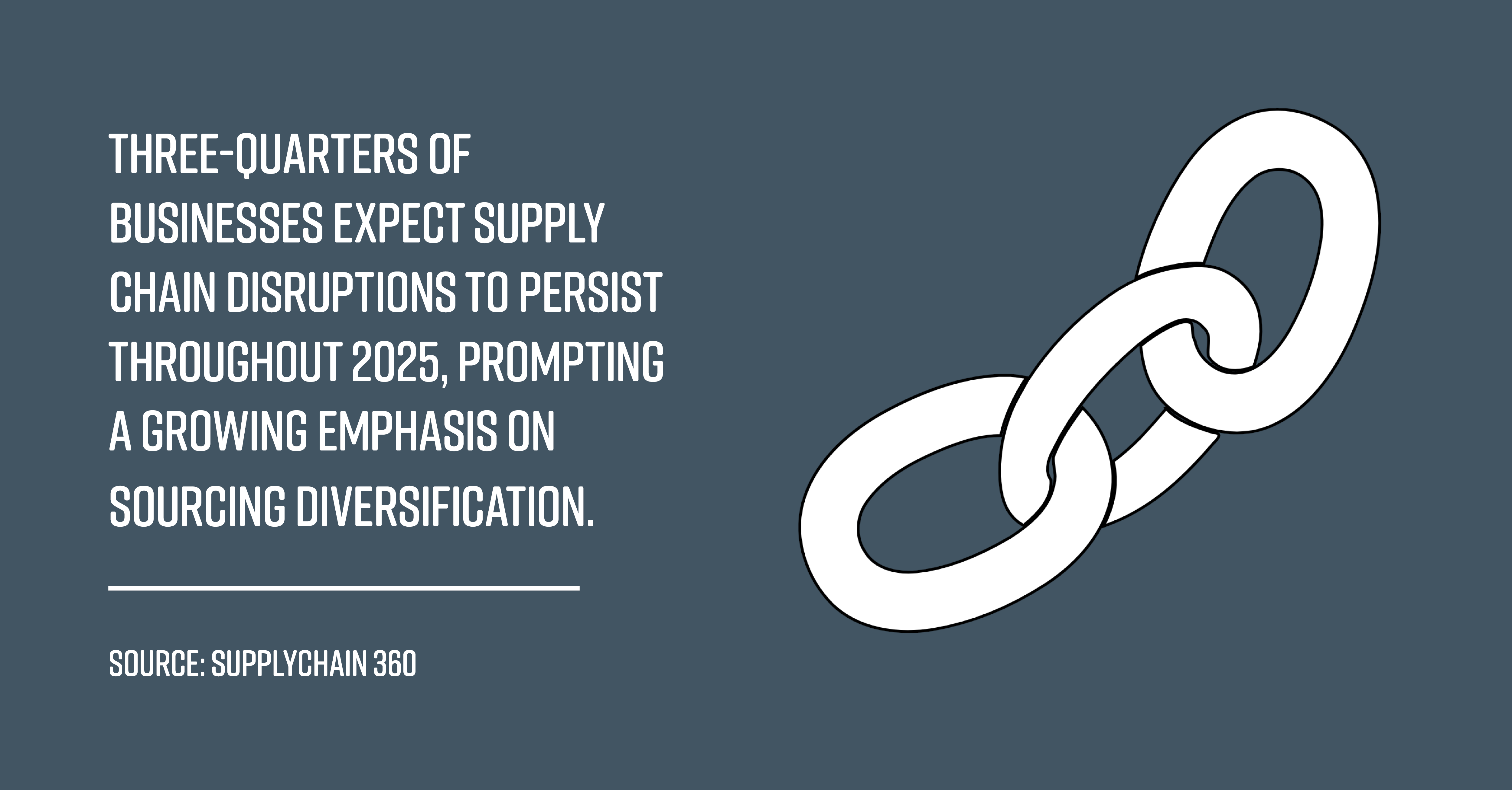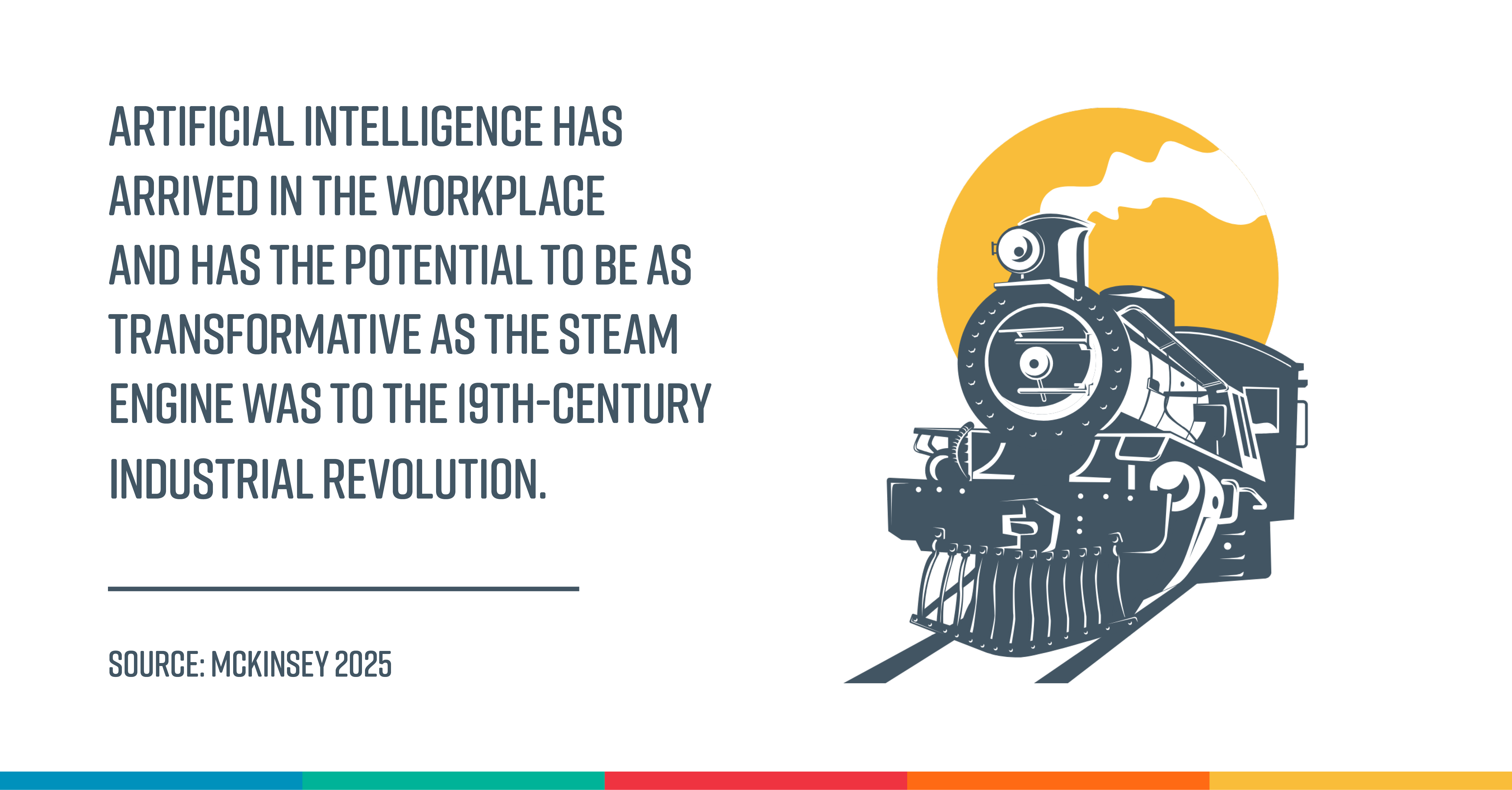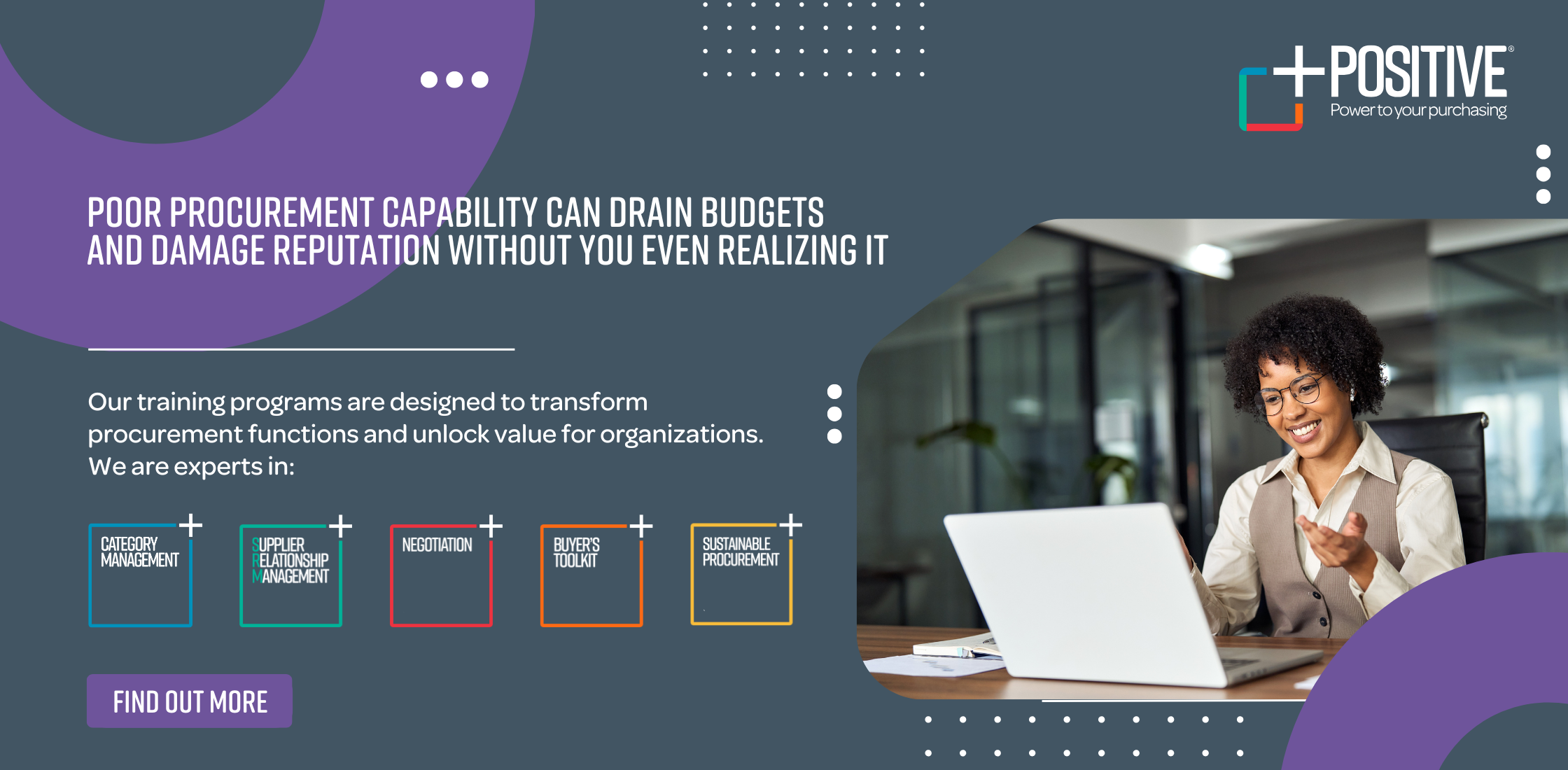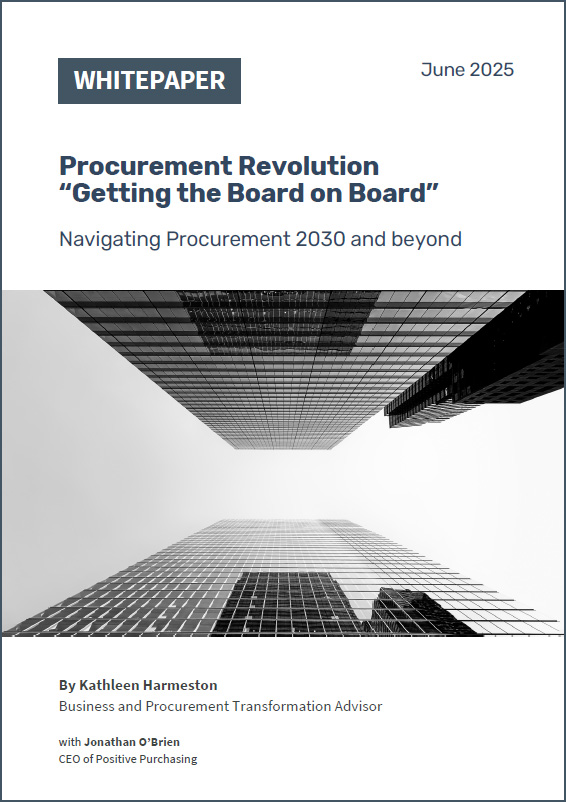Leading procurement expert Jonathan O’Brien provides a thought-provoking insight into the future of procurement and what we must do now to embrace and get ready for the incredible changes and possibilities ahead.
Like nothing we know today
In 2019, I first published this article that set out what procurement would look like in 2030 (you can read it here). My how things have changed since then! The original article is one of the most read on our website, so it seemed a good idea to update it for 2025. However, simply updating was not an option, but rather I had to tear it up and start again.
2030 is not that far away now, it’s just around the corner. Yet, in the next few years anyone in procurement is set to see profound changes. If you think the last few years have been dramatic, we are poised to undergo an even more dramatic transformation beyond what we might imagine. This will not be automatic. Some of it will happen all around us and sweep us along. However, the true potential will only be realized by those organizations capable of envisioning the possibilities we can only glimpse today and going after them.
Even though it’s only a few years away, Procurement 2030 is nothing like it is today. It will require a different set of skills, a new type of agility and a new mindset regarding what procurement is and how it operates. Data and AI will be central to driving everything we do, and new tech will be part of the story, but not quite as the rhetoric of today might suggest. Yet, Procurement 2030 has the potential to create unprecedented competitive advantage, but only for those organizations that start working towards this new state today.
Agility = Survival
Of course, the world is changing at an ever-increasing rate – that’s old news. Political uncertainty, volatility, climate change, shifts in the territories where the wealthy or the willing workforce of the future reside, new trading tariffs, war, peace, more war, sanctions, and just when you thought you could make sense of things, something unexpected happens. Our natural tendency as humans has been to view change as an event, with an end when things will settle back down. They will not. One positive we can all take from the unprecedented changes we’ve seen in recent years is that we’ve all got rather good at embracing change as the new normal.
The only Procurement functions that will survive into 2030 and beyond with any meaningful degree of influence and impact beyond tactical buying, will be the ones that quickly learn how to be agile. We will need to be equipped to navigate through what will be an even more rapidly changing landscape, with a new set of challenges, responding in as close to real time as possible and adapting fast to stay ahead.
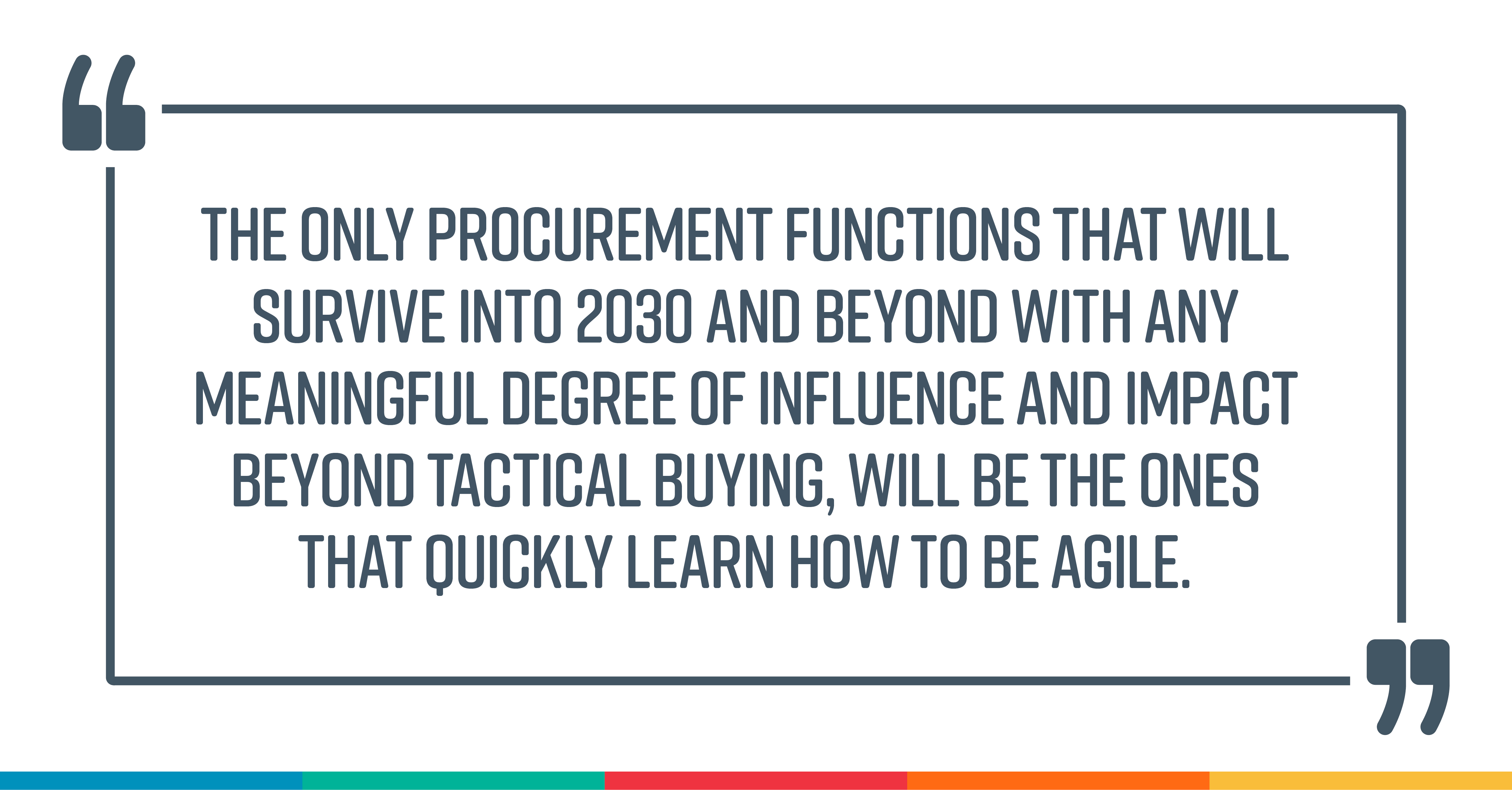
All change - Get ready for an entirely different supply base and new supply chains
The global marketplace has become less global in recent times. Once, globalization expanded our supply base horizons and provided a source of new competitive advantage; perhaps switching from ‘make’ to ‘buy’ and outsourcing non-core activities from low-cost countries.
Events in recent years served to highlight the fragility of our global supply chains we had come to rely upon. Add to this the fact we are now paying the price for decades of not taking sustainability seriously, meaning scarcity of some resources is now biting hard.
Whether driven by climate change causing crops to fail, or exhaustion of natural resources, globalization has taken a big hit. And then there are new geopolitical tensions with the imposition of new tariffs and sanctions, retaliation and a spiralling impact on world trade, making the global marketplace more problematic than promising.
By 2030 we can expect a redefinition of World trade. Globalization will not be dead, but troublesome with a big health warning, lots more risk and an incompatibility with new imperatives to hit net-zero targets. Expect more localization, onshoring or right shoring, and even a return to bringing some things back in-house or at least acquiring and vertically integrating critical parts of a supply chain.
We can also expect new sources of supply to emerge in parts of the world previously disregarded but now open for business and home to the willing workforces of tomorrow. Our supply chains will be different too, taking new routes and having to operate differently and with greater transparency to that which has gone before.
Furthermore, we will see a greater polarization of size of supplier. At one end, the agile, work from anywhere shift sparked by the pandemic, still has some standing and will continue to shape how our suppliers structure their operations. It will be less about suppliers being ‘housed’ in specific locations.
We can expect to see global interconnected networks of talent and excellence, with key nodes where physical goods get produced or services get performed, all working together as one. That said, ‘where’ things get produced or performed depends a lot on how things under President Trump’s administration ebb and flow during the term, in particular the degree of tariffs and sanctions imposed by the US and the retaliatory action by the rest of the World. We could see entire manufacturing centres relocate. At the other extreme, we can expect more supersized corporations, many of which will be essential suppliers whether we want this or not. These are companies that amass incredible wealth, size and crucially, power.
Procurement in 2030 will need to be in tune with the rapidly changing global supply base and acutely understand risk exposure. We will need to maintain an eye to how we exit or change an entire supply system, should we need to. We will also need to be masters in managing new types of relationships with suppliers that can make a difference to what we do, and the sustainability imperative will mean there will be more of them – especially where we need to work jointly with a supplier to meet sustainability goals. And then there are the critical few suppliers that could change the game for us if we can work with them as one, demanding procurement to become architects of a new ‘boundaryless workforce’ blurring where our company stops and the suppliers begins in pursuit of common goals.
How we manage the supply chains will also change. Once, procurement didn’t need to concern itself with what happened beyond its immediate suppliers. In 2030, what happens throughout our supply chains will be as much of a concern to us as what and how we buy, and we’ll be deploying new approaches to ensure we understand and can monitor our supply chains in real time. Here we can expect new data driven real-time metrics to be part of the procurement dashboard. Being able to ‘see’ what is happening at a remote facility with real-time data will be part of the day-to-day.
AI will not have taken over the world (of procurement) but data will be king
It is easy to think that none of this matters because new Agentic AI systems will replace the need for procurement and supply chain management as we know it, therefore we might as well give up wasting time trying to do it. But this is not the case. Not by 2030 anyway. Listen to the rhetoric of the futurists and you could be seduced into thinking we are just within reach of new procurement systems, with a giant magic button or where you tell it what you need (or it already knows) and it figures out how to source it perfectly. It will take into consideration the prevailing market and macroenvironmental conditions at that moment and auto populate with all the data needed.
This rhetoric also assumes that the complexities of implementing major IT systems across a global organization just take care of themselves. It gets worse, because our expectations support the idea that a tech solution will just do it. This expectation, and indeed the vision of the future of procurement that pads out our LinkedIn feeds, will certainly be possible, but it won’t be how most procurement functions will be operating in 2030. In fact, today there is a chasm between what the tech can actually do and what we expect it to be capable of doing.
By 2030 however, the chasm will have closed somewhat, but there will still be a gap; one that some are starting to close. Afterall, it has taken some 20 years for the majority of large companies to just adopt ERP systems, even then, few have managed to implement them well and the technology remains clunky. And this is tech served up by giant providers that have had many years and huge resources to try and get it right.
Looking backwards, we can conclude that procurement does not have a great track record when it comes to enabling the function with technology, especially when compared to that across other functions. Yet, we shouldn’t assume our slowness will continue. In fact, it won’t, and we can expect an acceleration in procurement’s ability to adopt tech driven by AI with ever increasing capabilities, literally bursting out in every direction.
Adoption of current AI in procurement is the one area where we have led the way when compared to most other business functions. It is here we will see the greatest progress by 2030, but only for those companies that manage to figure out how to make it work well. By 2030, those companies boasting something is ‘powered by AI’ won’t be fooling us with marketing puff, with AI transitioning from the superficial layer it is today in applications as a bot, co-pilot or agent, to a core foundation.
Therefore, today, procurement tech buying hasn’t progressed beyond acquiring multiple stand-alone, separate applications with ‘AI sprinkles’. By 2030, expect a new mindset where platforms are not the main event, but become the enablement layer within a bigger story. The procurement tech landscape will not be too different but will be a long way down the road of becoming less about islands of technology and more about big integrated solutions.
Many of the players that exist today won’t be here in 2030, some will be consumed into others, some will fail, and expect some new entrants and a melding of complementary tech to present more useful offers. ERP will give way to intake and orchestration (which is simply how we make lots of things that do different things work together). The big players today will retain footholds due to legacy business but will only survive long-term if they reinvent. Enter stage left some new zero to hero disruptors that start to offer a new take on the full-service procurement platform.
There will be no magic button, but we will probably have line of sight to where the magic button will come from by 2030. Such breakthroughs won’t come from the purveyors of procurement platforms today but will fall out of a seismic shift where a Microsoft, Google, Amazon or ChatGPT behemoth releases new tech and functionality that can readily underpin and enable core procurement tools. The procurement tech of 2030 will become more of the wrapper or app powered by next generation AI tools, with the means to access vast data sources in real time.
And that brings me to the other breakthrough by 2030 which will be our access to data. Lots of it! It will be the critical third component for new tech and AI to deliver on their incredible promises. Until now, procurement teams have neglected the value of data, assuming the purveyors of tech will serve it up. But, with a few exceptions, this has not yet happened, and the data driven tools out there today can offer a relatively small amount of the actual intelligence procurement needs to be effective. By 2030 the focus on ‘tech as top’ will have shifted to ‘data is king’ with the value of data as a key asset being realised. This will drive entire new operating models within procurement and will finally drive a lasting divergence of the strategic and tactical.
Finally, the age of automated routine spend arrives: The RFP is dead – long live the RFP!
By 2030, the degree of human intervention for day-to-day tactical procurement will have dropped significantly. We will see the automation of routine, generic, non-differentiated and non-complex spend and much of the ‘buying’ will simply take care of itself within next generation procurement systems, which may not necessarily be those leading the pack today. Effectiveness will be down to how the AI powered technology determines the optimum sourcing option at that time, within the boundaries the organization sets.
The new role of procurement will be to tailor these new systems to our needs and manage how they serve our business ongoing, whilst working to ensure as much spend as possible is generic and undifferentiated and so can be pushed to these platforms. It will be less about catalogues, preferred suppliers, framework agreements or anything that demands the effort required today, but rather about the system figuring out how to source and then contracting to do so.
Procurement will no longer fly the plane, it will do that for itself, making sure the aircraft’s systems work and are optimised ongoing whilst setting the parameters the plane will fly within. There will be very little need for RFPs or eAuctions managed by humans, and such activities will become part of how AI powered systems talk to each other. Negotiations for this type of spend will become AI to AI and this technology will simply be embedded within the sourcing platforms. Similarly, e-auctions may still happen, but they won’t be the long, drawn-out human affairs they are today. Instead, they will be concluded within a single second as a number of AI agents each representing different interests interact to reach a conclusion.
Strategic spend and critical supplier relationships will be where procurement adds the most value to the organization
Competitive advantage or public sector excellence will be directly related to how well procurement operates strategically to support wider organizational goals, and by 2030 expect a new procurement operating model and structure that supports this to be mainstream.
For the strategic spend, category strategies will become dynamic, shaped in real-time by AI powered systems accessing market, supply base, category, internal, commodity and global situational data in real time. These systems will ensure agile category management and prompt when to pivot to new sourcing strategies.
Strategic human-to-human negotiations will have ‘AI powered tech’ on the team as a trusted co-pilot accessing supplier, market, internal and other data to provide real-time facts and data, rapidly analysing the opponents changing position, generating creative alternatives and recommending concession trading steps.
We will be able to ‘see’ entire supply chains and what is happening at every step in real-time, as well as measure sustainability compliance, CO2, risk and efficiencies ongoing. AI will drive new predictive demand modelling as well as identifying risks and impacts before they happen, creating a new era of supplier and supply chain agility that equips companies to change sourcing arrangements before the impact occurs.
We will be much more equipped to work collaboratively with the critical few suppliers that can change the game for us, with tech and AI providing new ways to collaborate more effectively and create new value together. Finally, procurement governance at an executive level will have finally been realized with, for the first time, a real-time dashboard of the strategic contribution procurement is making.
Become strategic or die – A new procurement operating model
The structure and function of procurement that has remained largely unchanged for decades will change dramatically. No longer will it be ‘the function that buys stuff’ where activities are largely centred around supporting tactical spend and firefighting with the business, or where strategic procurement can only be found in the progressive few. By 2030 we will see procurement functions having a new team, new talents and will be set up to respond to a raft of new expectations from all quarters.
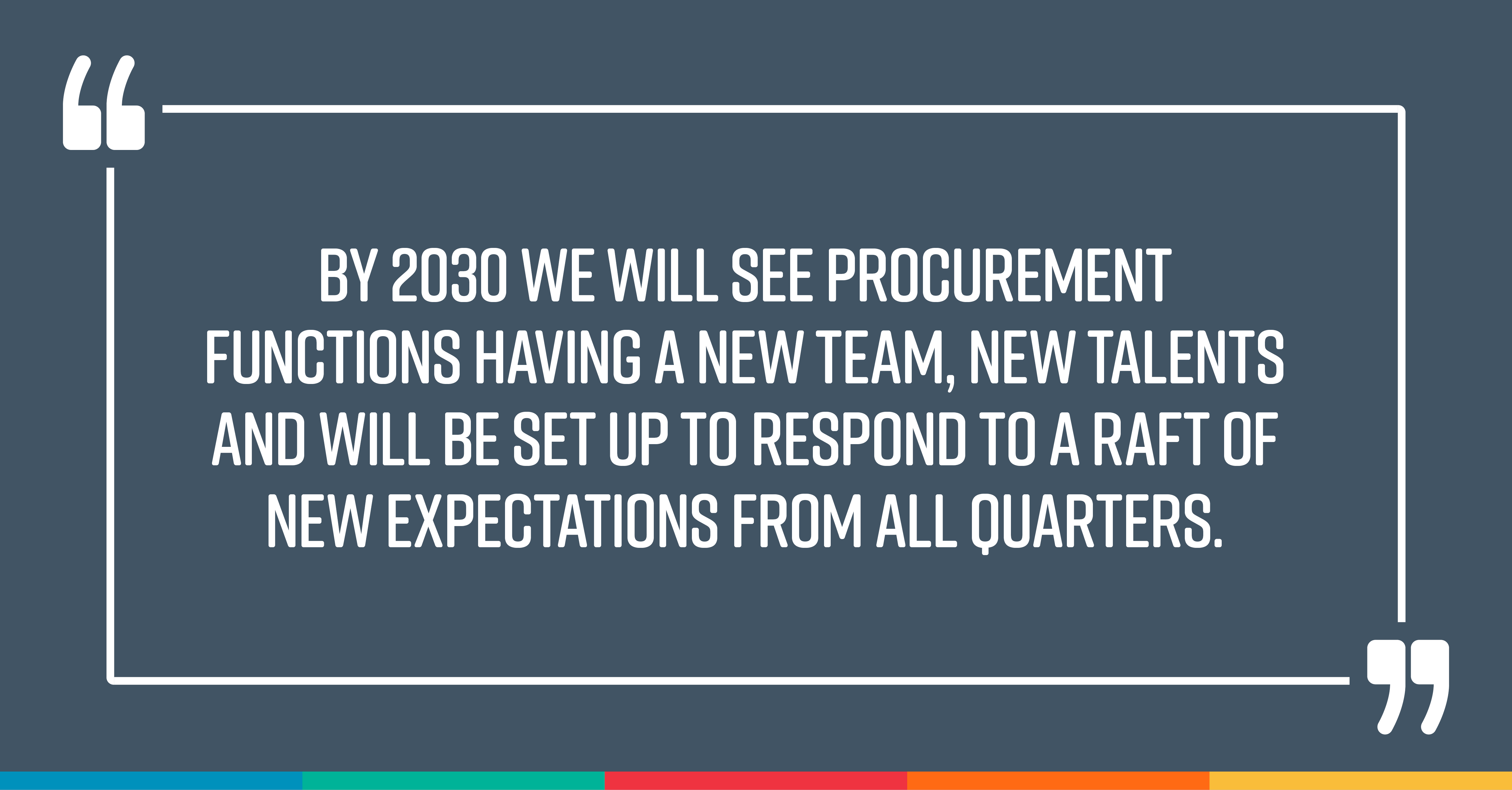
Those leading the field will have figured out a new operating model for procurement, with the organization structure built around the five new mainstays of procurement and how they work together:
- Strategic procurement – Realizing organizational ambition through the optimum supply-side interventions and unlocking supply-side possibilities.
For those that get this right, this is where we can expect to find the highly talented and experienced practitioners equipped and trained in next generation digital enabled category management, SRM, sustainable procurement and advanced negotiation tools. - Strategic supply chain management – Realizing procurement strategies in the supply chain.
Historically, supply chain management has operated separately to procurement, but expect convergence by 2030 driven by the fact that the nature of, and what happens within, supply chains is as much of the story as the procurement strategy, with sustainability being a key driver here. We can expect to see highly talented practitioners using next generation big data and AI driven systems to design and manage ongoing, our key supply chains. - Sustainable Procurement – Realizing organizational sustainability goals in the supply base.
Expect organizations to have dedicated sustainable procurement capability that will be essential to how organizations will be driving supply-side sustainability. This will run like a vein through every strategic procurement approach and will demand highly talented individuals with a unique combination of procurement, supply chain and sustainability capabilities. - Routine spend system management – Managing the routine spend system and ensuring the day-to-day business needs are being well served.
Here, smaller teams will possess both the know-how of good procurement and digital systems capability to ensure the plane flies just right. This function will be the primary outward facing, business serving team and as such, expect new measures of success around effectiveness of procurement vs serving the needs of the business. - Process excellence, technology, data and AI – Enabling the function with the process and tools for success.
Data (as an asset) management will become a key procurement activity alongside how it is used within the latest generation technology and AI. By 2030, the role of the process excellence lead will be a strategic one that’s critical to success, with a new team of data scientists, mathematicians and cyber experts now core and permanent members of the team. These won’t just be techies but will also have the basic building blocks of the latest thinking on strategic procurement, supply chain and economics in order to know how to apply their talents.
This all means that the most successful procurement and supply chain professionals of 2030 will be the ones with a very different and wider range of skills to that today. They will also need to be agile, unfazed by change and highly ethical – and many of them will need to be creative innovators. Attracting the right future talent for procurement will be mission critical. Non-procurement people may well make the best future procurement people and organizations will need to invest in developing them into the function.
What is clear is that the education routes for procurement professionals we see today are completely unsuitable for the future state and will have to change. Thankfully, the procurement of 2030 will offer great opportunities and can be a very attractive place to work, providing the organization’s recruitment policies and practice, and investment in talent development, reflects this.
By 2030 we can finally expect executive teams within progressive organizations to recognize procurement’s critical role in achieving corporate outcomes. The role of the CPO will, once again, be regarded as a strategic role, having dropped back a bit in recent years.
Sustainability – the struggle will continue
Having been top of the agenda at the start of the decade, then gone backwards because it all got too difficult and started to increase costs and was too much of a distraction with everything else, by 2030, sustainability will be right back at the top.
This doesn’t mean the World will suddenly have got nice and started caring again, quite the contrary in fact, but it will be driven out of necessity in response to several drivers: First, resource scarcity will be biting some sectors hard, compounded by a new geopolitical landscape where nations fiercely protect the value of what resources are left. Second, what is emerging legislation today will be enacted by 2030, holding big and medium sized companies more accountable and, third, it will be a necessary response to the heightened need for supply-side risk management. Finally, consumer, stakeholder, employee and social expectations on companies will make a sustainable supply base a source of new competitive advantage.
The good news is what is difficult today will be easier by 2030. New technology solutions, much better data and AI, mean it will for the first time, be possible to ‘see’ everything that is happening throughout an entire supply chain in real-time and have a real-time dashboard of compliance. AI processed satellite imagery will monitor and track employees in remote farmsteads, individual items in a supply chain will be tracked at every step using RFI, IoT and blockchain, and we will be able to see total CO2 emissions and resource consumption across the entire supply chain at any time.
Furthermore, complex AI powered tools linked to lots of data sources will be able to model and predict the impact of macro environmental events or geopolitical changes, allowing us to act before things have become a problem.
Get ready for 2030
Today, procurement as we know it is not fit for purpose in 2030. We can expect every corner of procurement to change with tech, AI, data, new talent, a new operating model, the sustainability imperative, and new expectations from the business, customers and the supply base all driving what will be a step change. Many in procurement today won’t make it or won’t want to. For the rest of us exciting and eye watering opportunities await. The journey has only just begun. There has never been a better time to be in procurement.
Jonathan O’Brien, CEO of Positive Purchasing Ltd, is a leading expert on procurement and negotiation and works with global blue-chip organizations to equip them with the latest generation strategic procurement platforms and drive deep transformation of capability.
If you enjoyed this blog, why not check out our latest whitepaper ‘Navigating Procurement 2030 and Beyond’. Written by Kathleen Harmeston – Business and Procurement Transformation Advisor, and Jonathan O’Brien – CEO of Positive Purchasing, this whitepaper explores the evolving role of procurement in a volatile global business environment.
